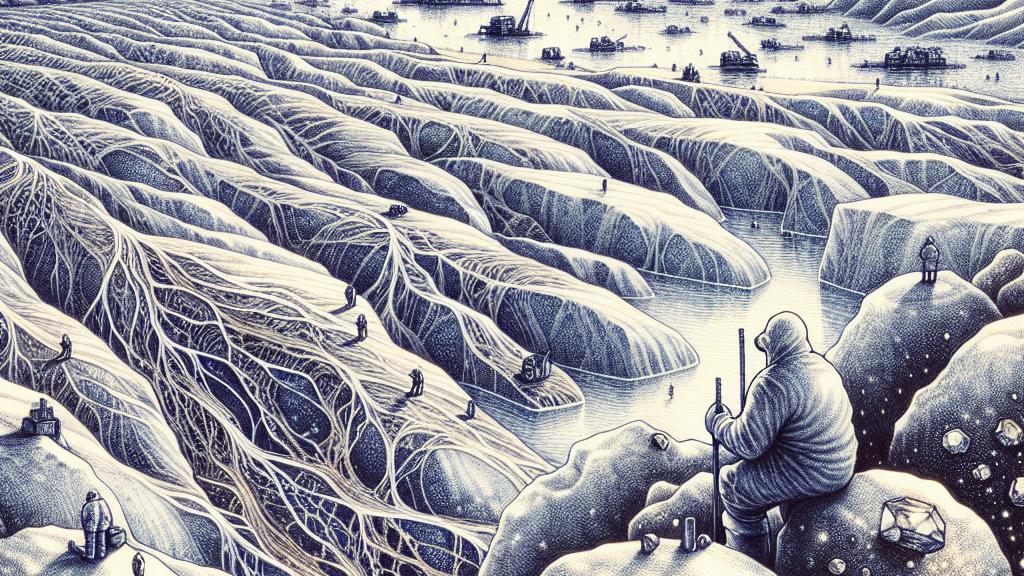Exploring the Valuable Minerals of Greenland
Overview
- Greenland possesses a wealth of essential minerals vital for a sustainable energy future.
- The mining industry is hindered by strict regulations and indigenous opposition.
- Harnessing these minerals could shift reliance away from foreign suppliers and invigorate local economies.

Mineral Wealth Beneath Greenland's Surface
Imagine this: beneath the stunning glacial landscapes of Greenland lies an astonishing wealth of minerals waiting to be discovered. This semi-autonomous territory of Denmark isn’t just a picturesque frozen paradise; it is rich in critical minerals that are essential for our clean energy future. In fact, a remarkable 25 out of the 34 minerals classified as 'critical' by the European Commission can be found right here. For instance, rare earth elements are indispensable for creating powerful permanent magnets found in electric vehicles (EVs) and wind turbines. Companies like Critical Metals Corp and Neo Performance Materials are ready to dive into these opportunities, yet they face significant challenges from complex regulations and environmental concerns. Clearly, Greenland is not just an arctic landscape; it is a treasure trove for sustainable energy resources!
The Roadblocks to Mining Development
However, the path to unlocking Greenland's mineral potential is not smooth. The Inuit Ataqatigiit party, which governs Greenland, champions environmental protection and has imposed a ban on uranium mining, all while addressing the concerns of local indigenous communities who fear that mining could jeopardize their land and heritage. This creates a crucial dilemma: on one side lies the pressing global need for clean energy minerals; on the other, the rights and sentiments of local populations. Thus, any movement forward in mining will need to thoughtfully engage with these communities, ensuring that development respects their values and contributes positively to their lives. It is vital to foster a collaborative atmosphere where dialogue thrives, allowing both local perspectives and national interests to harmonize.
A Global Imperative for Mineral Security
In today's world, where mineral resources hold the key to energy independence, Greenland stands as a crucial player. Currently, the United States relies heavily on imports for these critical materials. Shockingly, it sources nearly all of its natural graphite from abroad, with a significant portion coming from China. This monopoly is alarming, as China dominates the global production of vital materials—producing approximately 98% of gallium and 82% of natural graphite. Such dependency puts national security at risk, especially in light of growing geopolitical tensions. Nevertheless, if Greenland's mineral wealth is responsibly harnessed, it could significantly weaken this reliance, creating a robust supply chain essential for the future. Estimates indicate that Greenland might hold the second-largest reserves of rare earth elements, positioning it as a key contributor to the global renewable energy movement. Thus, recognizing the potential of these minerals is not merely about economic growth for Greenland; it represents a vital step toward achieving a sustainable energy future for the world.

Loading...